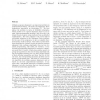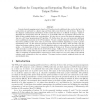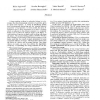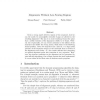97
Voted
RECOMB
1997
Springer
15 years 5 months ago
1997
Springer
Multiple sequence alignment is an important problem in computational biology. We study the Maximum Trace formulation introduced by Kececioglu [?]. We first phrase the problem in ...
RECOMB
1997
Springer
15 years 5 months ago
1997
Springer
A progressive alignment algorithm produces a multi-alignment of a set of sequences by repeatedly aligning pairs of sequences and/or previously generated alignments. We describe a ...
120
Voted
RECOMB
1997
Springer
15 years 5 months ago
1997
Springer
113
Voted
RECOMB
1997
Springer
15 years 5 months ago
1997
Springer
The paper studies the computational complexity and approximation algorithms for a new evolutionary distance between multi-chromosomal genomes introduced recently by Ferretti, Nade...
82
Voted
RECOMB
1997
Springer
15 years 5 months ago
1997
Springer
78
Voted
RECOMB
1997
Springer
15 years 5 months ago
1997
Springer
78
Voted
RECOMB
1997
Springer
15 years 5 months ago
1997
Springer
RECOMB
1997
Springer
15 years 5 months ago
1997
Springer
Algorithm development for comparing and aligning biological sequences has, until recently, been based on the SI model of mutational events which assumes that modi cation of sequen...
127
Voted
RECOMB
1998
Springer
15 years 5 months ago
1998
Springer
Given a strong match between regions of two sequences, how far can the match be meaningfully extended if gaps are allowed in the resulting alignment? The aim is to avoid searching...
74
Voted
RECOMB
1998
Springer
15 years 5 months ago
1998
Springer




